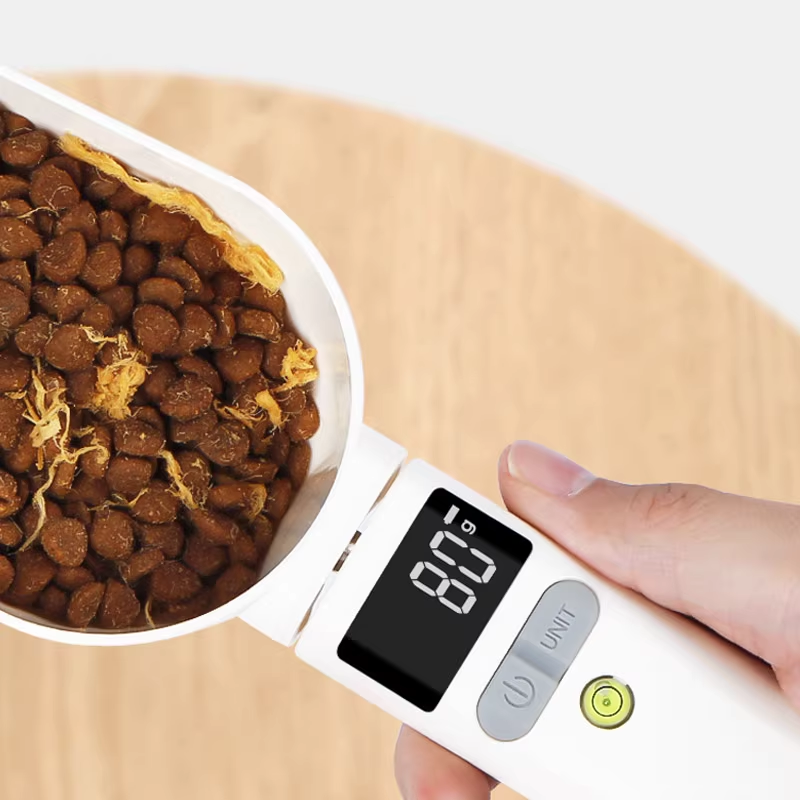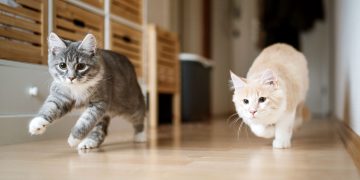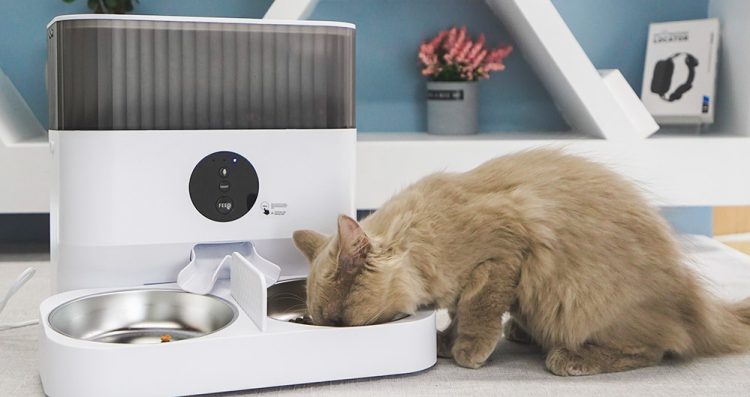Introduction:
As pet owners, we are always looking for ways to improve the well-being and convenience of caring for our furry friends. One innovation that has gained significant attention in recent years is the smart pet feeder. These high-tech devices promise to streamline pet feeding routines, ensure timely meals, and even adjust portion sizes. But as with any technological advancement, many pet owners wonder: Will smart feeders change my pet’s eating habits? And more importantly, can these tech products be trusted to properly care for my pet’s nutrition? In this article, we’ll explore the potential benefits and challenges of smart feeders and evaluate whether they are truly reliable.
1. What Are Smart Pet Feeders?
Smart pet feeders are automated devices designed to dispense food for your pet on a predetermined schedule. They can be controlled remotely via smartphone apps or connected to the internet for real-time adjustments. Many smart feeders offer a variety of features such as:
- Scheduled feeding: Set times for automatic feeding.
- Portion control: Measure specific amounts of food for each meal.
- Remote control: Feed your pet remotely through an app, ideal for busy pet owners.
- Voice communication: Some models allow pet owners to communicate with their pets via voice messages.
- Camera integration: Some feeders come with built-in cameras to monitor your pet while they eat.
These feeders can be particularly useful for busy pet owners, those with pets on special diets, or individuals who need to manage their pet’s eating habits more strictly.
2. How Smart Feeders Could Change Your Pet’s Eating Habits
Smart pet feeders are designed to improve the feeding routine, but they can also influence your pet’s eating habits in several ways:
a. Regular Feeding Schedule
One of the primary benefits of a smart feeder is its ability to provide a consistent feeding schedule. Cats and dogs, like humans, thrive on routine. Having meals dispensed at the same time each day can help regulate their hunger, leading to a more predictable eating pattern.
- Predictable feeding times: Regular meals help your pet feel secure and avoid overeating or undereating.
- Behavioral benefits: A set feeding time reduces anxiety, especially for pets that are accustomed to having food readily available.
This regularity can help pets develop healthier eating habits over time.
b. Portion Control and Weight Management
Many pets, especially those left to free-feed, may overeat, leading to obesity and other health issues. Smart feeders with portion control features can help manage your pet’s food intake more effectively. By ensuring your pet only gets the right amount of food at each meal, you can help prevent overeating and support healthier weight management.
- Pre-programmed portion sizes: Set specific portions to ensure your pet isn’t consuming more than they should.
- Monitor consumption: Some feeders even track how much food your pet is eating, allowing you to monitor their appetite and adjust portions if needed.
For pets on a special diet or with weight management needs, smart feeders can be a great tool to maintain their ideal weight and avoid unhealthy eating behaviors.
c. Better Control Over Special Diets
If your pet is on a special diet—such as for allergies, weight loss, or health conditions—smart feeders can be incredibly helpful. These devices allow you to strictly control what your pet eats and when.
- Timed feedings: You can program the feeder to give your pet smaller, more frequent meals throughout the day, ideal for managing certain health conditions.
- Accurate feeding: With a smart feeder, you can ensure your pet is only consuming the designated food, preventing them from sneaking extra snacks or food from other sources.
If you have multiple pets, a smart feeder can help prevent one pet from stealing the other’s food.
3. Challenges and Concerns with Smart Feeders
While smart pet feeders offer many potential benefits, they are not without their challenges and concerns. It’s important to consider the potential drawbacks before investing in this technology for your pet.
a. Dependence on Technology
Like any tech product, smart feeders rely on technology to function. This means there is always the risk of malfunctions or issues, such as:
- Connectivity problems: If the feeder is connected to the internet, a loss of Wi-Fi connection can prevent you from controlling the device remotely.
- Mechanical failures: The feeder may encounter issues such as clogging or malfunctioning of the dispensing mechanism, especially if your pet’s food contains large pieces or is too dry.
While many smart feeders come with built-in backups (like a manual feeding option), technical issues can cause stress or inconvenience, especially if you rely on the feeder to regulate your pet’s meals while you’re away.
b. Inconsistent Portion Sizes
While many smart feeders boast precise portion control, some models may not be perfectly accurate. If the feeder’s dispensing mechanism is faulty, your pet may receive slightly too much or too little food, which could lead to either overeating or insufficient nutrition.
To avoid this, it’s essential to regularly monitor the functioning of the device and double-check portion sizes. Ideally, feed your pet using a measuring cup until you’re confident the smart feeder is dispensing the correct amount.
c. Pet’s Resistance to Change
Not all pets are immediately comfortable with new gadgets, and some may be hesitant to approach or eat from a smart feeder, especially if it dispenses food in an unfamiliar way. Cats, for example, may not readily accept a feeder with a new dispensing mechanism or sound.
Owners may need to spend time gradually introducing their pets to the device, which could include training sessions or offering treats to encourage the pet to use the feeder.

4. Are Smart Feeders Reliable?
The reliability of a smart feeder largely depends on the brand and model you choose. High-quality feeders from reputable brands are generally well-designed and function as promised. However, some budget-friendly options may come with issues related to accuracy, durability, or customer support.
a. Researching the Brand
Before purchasing a smart feeder, it’s essential to research the brand and read user reviews. Look for feedback on product performance, durability, and the customer service experience. Some brands even offer guarantees or warranties, which can give you peace of mind in case of technical problems.
b. Consider the Features
Choose a smart feeder with features that suit your pet’s needs. Some models are specifically designed for pets with dietary restrictions, while others are better suited for those with no dietary concerns. Be sure to select a feeder with a portion control system that is proven to be accurate and easy to maintain.
c. Regular Maintenance
Even the most reliable smart feeder requires regular maintenance. Cleaning the feeding tray, checking for food clogs, and updating the software (if applicable) are all part of ensuring the feeder operates correctly. A smart feeder is only as reliable as the effort you put into maintaining it.
5. Conclusion: Are Smart Feeders Worth It?
Smart pet feeders can be a valuable tool for improving your pet’s eating habits and managing their diet, especially for busy pet owners or those with specific feeding requirements. The convenience, portion control, and scheduled feeding can significantly benefit pets’ health by providing consistent and appropriate meals.
However, it’s important to carefully evaluate your needs and consider the potential challenges, such as technical malfunctions or your pet’s adaptation to the device. While tech products can enhance your pet care routine, they are not without their risks, and they should not replace regular attention to your pet’s health and behavior.
In the end, a smart feeder can be an excellent investment if it fits your lifestyle and your pet’s needs. Just be sure to choose a reliable model, maintain it regularly, and remain attentive to your pet’s overall health and happiness.























































